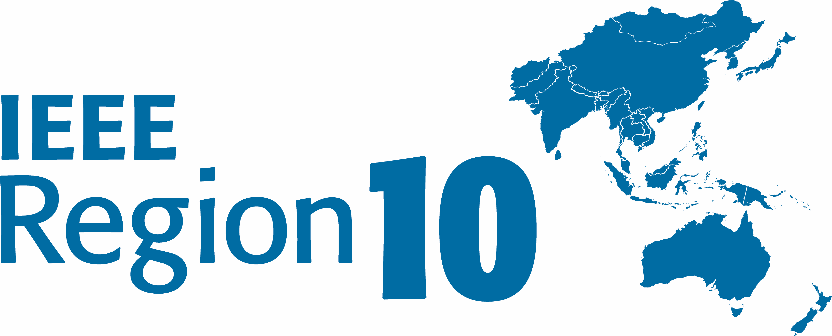Written by: Shaikh A. Fattah, Technical Program Chair, IEEE TENSYMP2020
Organizing a full virtual conference is a very difficult task but it is very much essential nowadays considering the global COVID-19 pandemic. I had the opportunity to join some recent virtual technical conferences. Moreover, as Technical Program Chair of IEEE TENSYMP2020, I have gathered some real experience which has inspired me to share for the benefit of future conference organizers.
Two major aspects of a Face-to-Face (F2F) conference are publication and networking. If the objective of a conference is set in a way that it will keep the video presentations for some time to watch and an option for getting answers to questions via email, will you treat it as an equivalent to a face-to-face conference? It may be a temporary solution, especially during this global pandemic, but it cannot give a participant the feeling of a F2F conference. Publishing articles along with video presentations and option for online discussion, is an established method of archival. However, in my opinion, if a conference cannot be delayed or postponed, it needs to be organized in such a way, that the participants can get the feel of an actual F2F conference. The term “virtual” clearly grows an expectation of “virtual reality”, that is a simulated environment to give a feeling of a real F2F conference. In order to meet such expectations, tremendous cooperation is required from organizers, authors, session chairs, presenters, speakers and guests/participants.
Increased Participation
Number of participants in a technical session of a virtual conference is expected to be more than that of regular F2F conference. Possible reasons are:
- Ease of joining a virtual technical session from a remote location (no need to travel)
- Ease of moving between different parallel sessions (no need to walk or feel shy)
- Ease of joining multiple sessions at a time (with multiple devices or using special way)
- All co-authors of a paper and their supervisors, friends, colleagues, family members can easily join (if access control is not very strict)
- Sometimes, it is also possible to join in parallel to the regular works (time-sharing)
- No need to dedicate the whole day (possible join whenever you want)
- No need to even interact (possible to mute and just listen)
There is a tendency of frequent moving from one virtual room to other rooms as it is very easy via online. It allows a participant high degree of freedom in listening to the desired presentations. As a result of frequent moving, the name of a same participant may be found in various rooms.
Virtual Conference Coordination
Generally, in a virtual conference, authors are required to provide the recorded video presentation and they may or may not be asked to be present online during the live presentation session (if any). Organizers allocate hosts to play the video using an online platform like Zoom or Webex. As a result of the pandemic, virtual conference hosts may also be working from various remote locations. For a big conference there will be many parallel sessions run by many hosts. Coordinating large number of hosts operating remotely from various locations is very important. Generally speaking, instant decisions are needed during the technical conference. Hence, the hosts need to be closely involved with the conference or at least get detailed instructions for the conduct of the conference.
A central coordination system is always very helpful where Virtual Conference Management Chairs continuously monitor the virtual rooms and take actions as demanded. If a room is completely collapsed, it can be run from the central coordination room by the Virtual Conference Management Chairs. The backup of the virtual platform is also necessary and the hosts must be trained in that backup platform. This type of multi-level backups is necessary for the smooth uninterrupted operation. In TENSYMP2020, we had kept fifth layer backups.
Virtual Technical Session Room Management
One possible format to manage a virtual technical session room is: two Session Chairs, two hosts. In TENSYMP2020, along with the hosts, a PhD holder Room Lead volunteer was allocated. It helps in managing the session, especially when a Session Chair is late/absent in a room. Some other factors regarding virtual technical session management are presented below:
- Hosts need to be connected amongst themselves via phone and online medium. Room hosts must continuously update the present/absent status of the authors and Session Chairs to the Central Coordination Room to be able to take immediate action. If needed, re-scheduling may also be done.
- Participants in a room can be asked to write name and affiliation on the chat box. Display name on the platform needs to be explainable and easily understandable.
- In order to confirm the attendance of authors in a technical session, an online attendance sheet can be maintained during the session and confirmed by the Session Chairs.
- Presenters/speakers should be allowed to join the virtual room before the starting of a session to test the connectivity. This allows in many cases a very friendly live discussion prior to a session. In some cases, extended period can be allowed after the session to complete the discussions among the participants and speakers/Session Chairs.
- Several precautions are required to avoid unwanted disturbances during a presentation, such as weird annotations, sounds and videos.
- Conference proceedings may be kept in some drive from where authenticated users can download it using password. Session Chairs need the full/partial access of the proceedings.
- Individual paper evaluation needs to be collected through online from the Session Chairs with help of room host.
- Poll option can be kept to make the session interactive.
Live Session versus On-Demand Recording
Most of the authors prefer to play recorded video presentation as this is very well-planned and well-delivered. It also helps participants to have a timely presentation in a compact manner with all necessary information. One possibility is to keep the videos as ‘On-demand’ for participants instead of arranging sessions. Some relevant issues are discussed below:
- There are several uncertainties in case of a live presentation, such as connectivity, power failure, weather conditions, time zones, operational delay (file opening, sharing, playing other files), and operational inefficiency (to setup optimal resolution, sound quality, display options in online platform).
- Recording via Zoom or some other software is found to be very comprehensive for users. Microsoft PowerPoint with embedded voice narration is also widely used.
- However, Q/A session are preferred to be carried out live if possible. Whoever is joining live can have additional discussion with Session Chairs. Moreover, Session Chairs’ comments are also valuable after the presentation. Answers can also be given by email or online or writing on the Chat box and the Session Chair can read them.
- Generally during the presentation, all are requested to write questions in the Chat box. Many Q/A and discussions can be ongoing in the Chat box.
- Participants can write their name and paper ID (if applicable) in the live display on his/her identity area, which helps to interact.
- All the sessions need to be recorded and preserved.
- On-demand mode is very helpful as participants can manage time and can listen to various sessions as per their interest. The expectation is to get real virtual experience like a F2F conference; on-demand option may not satisfy this expectation.
Registration in Virtual Conference
In virtual conferences, considering that the cost of organizing the conference is reduced, participation for general attendees is made free but authors generally need to pay the registration fees. However, making completely free to attend a technical conference is criticized by many organizers considering the future problem in getting paid participants in F2F conference. In TENSYMP2020, the registration fees were reduced to 60% for authors and for general participants, it was made free. For the purpose of security, a registration process is required for entering into a virtual technical room, which helps to track the details of a person entering in each room. It helps later for attendee analytics. However, if the entry process is made very complicated, many users may face problems.
Process of Virtual Recognition
In each session, in order to recognize the contribution of the Speakers, Session Chairs or Authors, if no action is taken, it may look bad. Presenting certificates with claps are the normal norm of showing gratitude in F2F conference. As an alternative, organizers can spend some time in mentioning few words of gratitude and also display the electronic certificates. Microphone can be turned on and all can give a clap. In this way, there will be a brief engaging period for all at the end. Award ceremony can also be arranged in a similar fashion. After declaring the award, the winner may be asked to raise hand and all can give clap while the certificate is being displayed.
Budget
Sometimes people ask why to take registration fees, as there is no cost. Organizers need to carefully consider all possible costs of a virtual conference. In a broad sense, it may require all costs except venue, food and speaker travel/accommodation. Other costs like logistics, kits, publicity, publication and web are required. At the same time, organizers may have to remember that the chances of getting sponsors in this situation is also very less.
One major cost is virtual platform purchase and management. In this format, it is also necessary to buy several required electronic equipment for uninterrupted service, like dedicated laptops, mouse, hard drive, headphones, pen drive, power bank, modem and SIM (in many cases for internet), data cost, drive storage, etc. For every moment, at least two hosts are required. If the conference is for the whole day, four persons are required. If you have 10 parallel sessions in each day of a three-day conference, imagine the involvement of number of persons and cost. In TENSYMP 2020, we had eight parallel sessions for three full days (13 hours/day). We had around 40 total hosts working from remote locations. The job of hosting is very monotonous but needs severe attention. In many cases, this is to be done by expert professionals rather than volunteers.
Networking Opportunities
Networking rooms are required where participants can chat with each other (hosts are required). In F2F conference, two or few participants may stand or sit together at a free space to discuss particular issues. This type of flexibility can also be created and discussed below:
- Whenever needed, small breakout rooms can be opened. Break out rooms may also help to organize various types of committee meetings.
- Tea break rooms can be made where participants are encouraged to join and gossip. Refreshment is very essential in between technical sessions. Gossiping online is getting popularity day by day and people are getting more accustomed with it.
- During lunch/dinner break, based on request, parallel breakout rooms with small number of participants can be arranged. People from same (or nearby) time zone can enjoy this benefit. Social events (if needed) can also be organized with live presentations.
- Promotional booth for sponsors can also be made, they may take a separate room (in the name of a company) or small breakout rooms. Interested participants can visit that virtual room to know more details.
Mode of Presentation and Maintaining the Quality
Pre-recorded video is the most common mode of presentation. Following issues must be checked for video presentation:
- Video quality of each presentation needs to be thoroughly checked. In many cases, poor quality videos/audios can be found. You may either request the author to resend or may use some software to enhance the audio/video quality.
- Different speakers are recording the presentation in different environments and audience has to listen to all of these various types of presentations; sometimes it is very annoying. Some sort of volume normalization is always very helpful; unless it destroys the original quality.
- Clear instruction about the required video presentation must be provided. For example, the duration, size, possible software to be used, and video file format. In TENSYMP2020, size: up to 100 MB; format: MP4; duration: 12 min; recording method: Zoom or Microsoft PowerPoint with narration.
Attendee Analytics
Number of attendees in a technical session or overall for the conference, is one of the major criteria to evaluate the performance of a conference. Although there are possibilities of multiple logins by a same user, Virtual Room Log can help a lot to analyze the attendance characteristics. Following data can be obtained:
- Duration of presence of a participant in a technical session or in whole conference
- Number of participants in a room and in the whole conference
- Frequency of entering/leaving by participants in a room
Based on the above statistics, if the technical area of the room is taken in consideration, one can conclude about:
- The trends of research interest by the participants
- The quality of presentation in a room.
If only registered attendees are allowed to join a virtual technical room, from the additional data of the registered participants, more interesting facts can be analyzed. For example:
- Area of interest of IEEE delegates from a particular IEEE region
- Variation of interest between student member and non-student member.
Innovative ideas and use of technologies can help organizers to make a virtual conference, “truly virtual”. I hope the global pandemic will be over soon but the constant effort of many organizers all over the world can establish a precise standard of organizing virtual conference, which may help in future to make some conferences “hybrid”, if necessary.


